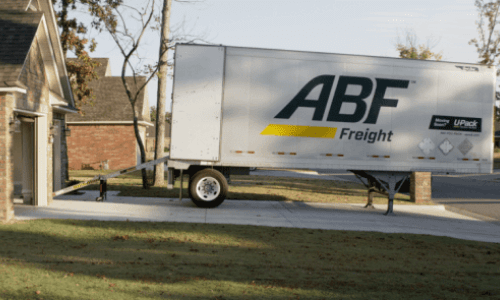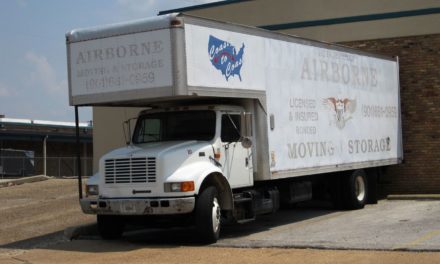10 Tips For Driving A Moving Truck
Driving an Upack moving truck is not much different from driving a regular vehicle. Upack trucks are designed to make moving and driving a simple, easy experience that any DIY mover can handle. Here are a few Upack comparisons between other moving truck rental companies.
Follow these 10 tips for driving a moving truck for a smooth driving experience during your next move.
1. Drive Slower
Slowing down makes it easier to see your surroundings and allows for more control during turns. If you are moving a long distance or in a congested area that requires a lot of stopping and going at low speeds, limit your speed to 30mph until traffic opens up a little bit to 50mph. Driving slower will also allow you not to miss an important sign or exit closing off your route if you’re on GPS.
2. Put Space Between You And Other Vehicles
It’s easier to spot obstacles in your path when you have plenty of room. When driving a moving truck, always leave yourself enough space between you and the car in front of you that gives you 3-5 seconds before coming to a complete stop. If there is insufficient or no space then allow for more time or seek an alternate route if possible.
3. Apply Brakes Sooner
If you’re turning off onto another road soon after passing it slows down sooner so the direction change doesn’t take as long allowing for less unpleasant surprises when trying to make sharp turns or switch lanes quickly. It will also help keep unpredictable moves from other drivers in check.
4. Extra Room When Turning
Don’t be afraid of using a lot of space when making turns. If you have to turn quickly, don’t cut it too close and definitely never stop in the middle of moving traffic. Make your first move into your new lane as slow as possible allowing plenty of time to switch lanes without incident.
5. Take Time Switching Lanes
Whether on a rural highway or congested city streets take more time for those lane changes instead of jerking from one side to another. It takes a lot longer to switch lanes than most think and switching lanes is harder at higher speeds where it’s difficult to see what’s going on around you because wind resistance displaces the vehicle making control more difficult. On top of that, if you pass someone you have to find a gap in traffic large enough for your vehicle to fit, keep an eye on the cars around you, and get back into the slow-moving traffic.
6. Only Pass When Necessary
Don’t be that driver who constantly passes everybody on the road so nobody will ever overtake you again. Making unnecessary lane changes is irritating for other drivers around you and can cause accidents with sudden unexpected movements. If possible pass only when necessary – e.g., if it’s clear in front of you (and doesn’t require switching lanes) or it’s required at some point further along your route (i.e., split highways).
7. Abide By The Rules Of The Road
Using turn signals when changing lanes or starting/stopping will go a long way to keeping everyone safe on the road. Everyone knows you need to signal your intentions before doing something like crossing lanes or turning off but be aware of how it affects other drivers around you especially when merging with traffic, make sure they can see your blinkers and there is enough time for them to move out of the way without coming dangerously close.
8. Park In Large Spaces
If parking in large spaces like big lots or lots that don’t sit right next to each other leave yourself plenty of room between cars. This will allow more maneuverability with turns and not having to stop suddenly if an unexpected car pops up beside you without leaving enough space.
9. Make Sure You Have Damage Coverage
This should be self-explanatory but many underestimate the consequences of not having collision or comprehensive coverage when driving a moving truck. If you don’t have it and something happens to your vehicle especially while parking in large spaces, moving lots, maneuvering through tight spots, etc., you’re on your own financially.
10. Back-Up Slowly
You may feel there’s never enough time to back up slowly even though it takes longer than most expect but use that extra time wisely by backing into spaces slowly letting others know where you are in the process. Use the mirrors often to make sure nothing is coming from behind before putting yourself at risk of an accident. Make small movements with the wheel every few seconds giving yourself time to respond if need be. If you hear thumping alongside your truck it’s probably just the moving pads – if you hear crunching, slamming, or other loud noises then stop immediately!
With these tips for driving a moving truck in mind, you should be able to navigate through any situation with ease. Driving a moving truck isn’t much different from driving a regular vehicle but remember to use an abundance of caution when shifting lanes, avoiding bumps, backing up, etc. Good luck and happy moving!





